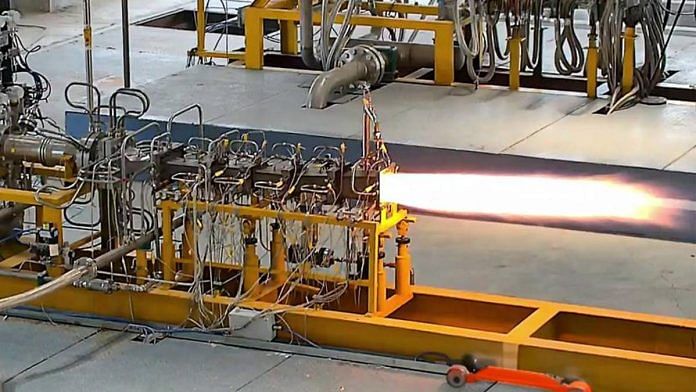New Delhi: In a stride forward for India’s homegrown defence capabilities, the Defence Research & Development Laboratory (DRDL) of the Defence Research and Development Organisation (DRDO) announced Friday that it had successfully completed a 1,000-second ground test of an active-cooled scramjet subscale combustor at its Scramjet Connect Test Facility in Hyderabad.
A scramjet is a type of jet engine designed for hypersonic speeds. Unlike typical jet engines, it doesn’t have moving parts like turbines or compressors. Instead, it relies on the high speed of the aircraft to compress incoming air.
A statement from the government Friday said the accomplishment comes after an earlier 120-second trial carried out in January, setting the stage for comprehensive, flight-capable combustor tests scheduled for later this year. It termed the test as a significant milestone in hypersonic weapon technology.
Hypersonic missiles represent a category of weapons capable of achieving speeds exceeding Mach 5, which equates to more than five times the speed of sound or in excess of 6,100 kilometres per hour.
A number of countries, notably the US, Russia and China, are currently engaged in the development of hypersonic technology. These advanced weapons have the potential to bypass existing air defence systems and deliver rapid and high-impact strikes. Central to sustained hypersonic flight is the scramjet.
By maintaining stable combustion for more than 16 minutes under internal temperatures exceeding 1,800 degrees Celsius, DRDO has validated both the combustor’s active-cooling thermal-management system and the performance of the new test-bed infrastructure.
Fuel circulated through internal channels absorbs and removes extreme heat, enabling continuous operation, an achievement that many see as one of the toughest technical hurdles in hypersonics.
“A successful 1,000-second run paves a strong base for the nation’s Hypersonic Cruise Missile Development Programme,” the statement noted.
The milestone propels India’s objective to develop long-range, Mach 6-plus cruise missiles that can effectively bypass contemporary air-defence systems and achieve a greater range of hypersonic missiles compared to those presently in operation globally.
(Edited by Nida Fatima Siddiqui)
Also Read: ‘Star Wars tech’: DRDO showcases 30 KW laser-based weapon to take down helicopters, swarm drones






